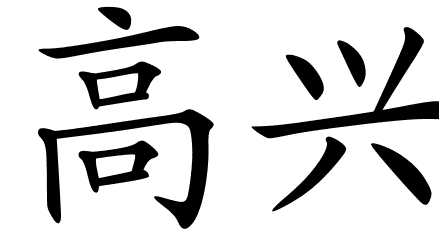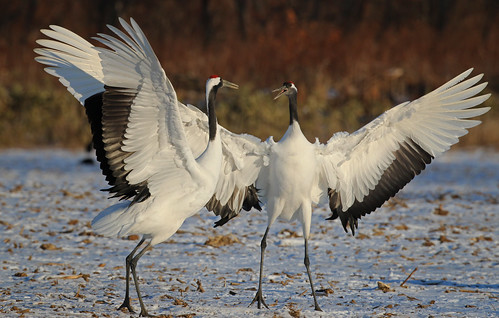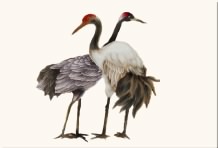
Chinese Symbols and Their Meanings.
Chinese symbols and their meanings photos
10 Chinese Symbols For A Happy Home
The start of the Gregorian new year is always an exciting time for me. It’s a chance to start fresh, make resolutions, and work towards improving myself in every area of life. But as a photographer who has traveled extensively, I know that there are so many other new years and traditions that are worth celebrating and exploring.
Today marks the start of the Chinese new year, and I couldn’t be more excited. The vibrant colors, festive decorations, and delicious food all make for a truly unique and memorable experience. As I wander through the bustling streets of Chinatown, my camera in hand, I am struck by the beauty and intricacy of East Asian design.
From the delicate paper lanterns swaying in the breeze to the ornate dragon dance performances, there is no shortage of inspiration for a photographer like me. And of course, no celebration is complete without a little bit of feng shui. I love incorporating elements of this ancient Chinese practice into my photography, whether it’s through the use of vibrant colors, natural materials, or careful composition.
As I snap photos of the colorful parades and bustling street markets, I am reminded of the rich cultural heritage of East Asia, and the many other new years and traditions that are waiting to be discovered. Each one offers a unique opportunity to connect with people, explore new places, and capture the beauty of the world through my lens.
The decorative arts of China have captivated scholars and enthusiasts alike for thousands of years, thanks to their abundance of symbolism and focus on beauty. According to a document on Chinese symbols by The British Museum, symbolism has played a significant role in the lives of the Chinese people. This is due in part to the nature of their written and spoken language, which has contributed to a rich vocabulary of symbols.
Are you looking to bring some good fortune and positive energy into your home this year? Look no further than the rich symbolism of Chinese culture. With a focus on harmony and balance, these life-improving symbols have been used for centuries to promote prosperity, health, and happiness.
One of the most well-known symbols is the Chinese character for “福” (fú), which means good fortune or luck. Often seen hanging upside down on doorways during the Chinese New Year, this symbol is believed to bring blessings and wealth to the home.
Another popular symbol is the “龙” (lóng), or dragon, which represents power and strength. In Chinese culture, the dragon is a revered creature that is believed to bring good luck and protection. Incorporating images of dragons into your home décor can help promote confidence and success in all aspects of life.
For those seeking more balance and harmony, the yin yang symbol is a great choice. Representing the interdependence of opposing forces, this symbol is often associated with the principles of Taoism. Placing yin yang symbols throughout your home can help create a sense of calm and balance.
Of course, these are just a few of the many symbols and traditions that Chinese culture has to offer. Whether you choose to display a lucky red lantern or hang a painting of a majestic crane, incorporating these symbols into your home décor can help bring a sense of joy, harmony, and good fortune to your life.
Chinese Symbol 1: Orchid

Fong Chow, a former assistant curator of Far Eastern Art at the Metropolitan Museum in New York, explored the use of symbols in Chinese porcelain in his study entitled “Symbolism in Chinese Porcelain.” In it, he revealed that flowers are among the most prevalent symbols in Chinese art. Confucius himself held the orchid in high regard, considering it a noble plant. Legend has it that when Confucius came across orchids in a forest, he likened their fragrant aroma, despite no one being around to appreciate it, to a man who maintains his noble character even in the face of poverty. Along with the plum (winter), chrysanthemum (autumn), and bamboo (summer), the orchid (spring) is considered one of the Four Plants of Virtue.
Chinese Symbol 2: Bamboo
Bamboo, one of the most distinctively Chinese symbols, is steeped in meaning. Its Chinese word, “zhu” (竹), is a homophone for the word “to congratulate,” imbuing it with positive connotations. Its hardiness – it grows and stays green throughout the year – represents durability and strength, while its flexibility symbolizes resilience. Even when buffeted by strong winds, bamboo will bend but not break, eventually returning to its upright position. Its simplicity is considered honorable, as it produces no flowers or fruit, and its empty stalks are seen as symbols of modesty and humility in Chinese culture. According to writer Su Dong-po, “One can manage without eating flesh, but one cannot manage without the bamboo.”
Chinese Symbol 3: Five
In Chinese culture, the number five (wu 五) is consistently considered to be auspicious, mainly because it is associated with the five complementary world elements. The wu xing, which consists of water, fire, wood, metal, and earth, is the most fundamental organizational principle in Chinese philosophy, and it informs various other principles like the Five Blessings, Five Classics, or the Five Metals.
Chinese Symbol 4: Birds

Chinese symbolism is filled with significant birds, with the phoenix (feng 凤) being the most notable. This legendary bird is revered as the ‘king of the birds’ and is representative of all winged creatures in the Four Benevolent Animals classification system. According to this system, the phoenix represents birds, while the dragon represents scaled creatures, the unicorn represents animals, and the tortoise represents shelled creatures. In decorative arts, the phoenix is a symbol of good fortune and opportunity. It is considered as a Chinese symbol of the Empress, and when depicted alongside the dragon (the Emperor), it signifies a perfect marriage.
The crane (he 鹤) is a symbol of longevity due to its extended lifespan. Known as the ‘coursers of the Gods,’ flying cranes represent the desire for promotion. Additionally, the Chinese word for crane is similar to the word for ‘harmony.’ Thus, a pair of cranes is viewed as a representation of a harmonious marriage. In contrast, peacocks with their ornate feathered tails symbolize beauty and dignity.
Chinese Symbol 5: Dragon
Considered the most dominant symbol in Chinese culture, the dragon possesses supernatural abilities and can control cosmic forces. As a sacred imperial symbol, it is linked to the Emperor (much like the phoenix symbolizes the Empress). Unlike in many other cultures, the Chinese dragon is perceived as good-natured and is regarded as the most favorable symbol. One of its noteworthy attributes is the ability to bring rain to arid areas, which implies prosperity.
Chinese Symbol 6: Ginkgo tree
The sacred Ginkgo tree is a Chinese native that holds significant importance. This living fossil is believed by dendrologists to be the only surviving species of its division, with no living relatives. Despite growing originally throughout the northern hemisphere, only a few in China survived the ice age. Notably, four Ginkgo trees in Hiroshima managed to survive the atomic blast, showcasing their resilience. This tree symbolizes longevity and enlightenment, attributed to its ability to withstand the test of time. Furthermore, the Ginkgo tree was frequently used as a motif during the Art Nouveau period.
The sacred Ginkgo tree is a Chinese native that holds significant importance. This living fossil is believed by dendrologists to be the only surviving species of its division, with no living relatives. Despite growing originally throughout the northern hemisphere, only a few in China survived the ice age. Notably, four Ginkgo trees in Hiroshima managed to survive the atomic blast, showcasing their resilience. This tree symbolizes longevity and enlightenment, attributed to its ability to withstand the test of time. Furthermore, the Ginkgo tree was frequently used as a motif during the Art Nouveau period.



